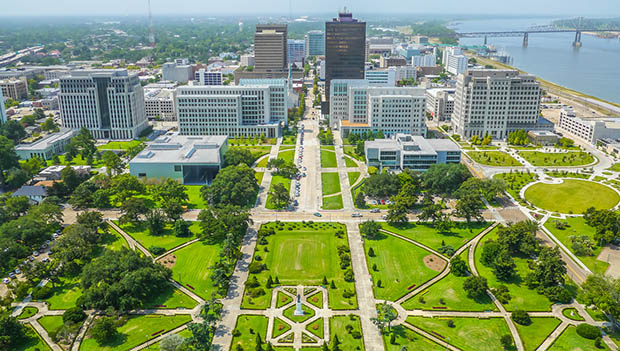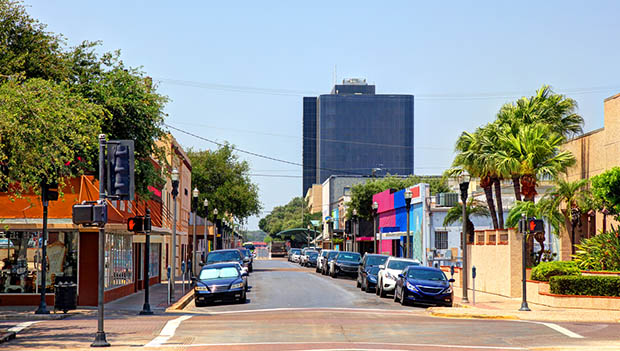The fitness industry is booming, yet year after year, Americans' waistlines continue to grow. The latest reports find that almost 40 percent of the U.S. population aged 15 and older is considered obese. That's not only affecting our physical health but also the economy. The high costs of medical treatment for obesity-related illnesses and annual productivity losses due to work absenteeism is not only putting a strain on our belt buckles but our wallets too.
The personal finance website, WalletHub, compared 100 of the most populated U.S. metro areas across three key dimensions: obesity & overweight, health consequences and food & fitness. it used data from various sources, such as the U.S. Census Bureau and the CDC, to put together the final report standings.
You can read the full report here.

10. Augusta-Richmond County, Georgia/South Carolina
New to the list this year is Augusta, Georgia. It ranked No. 4 in the highest percentage of obese adults and No. 2 in the highest percentage of adults with a low veggie/fruit consumption. Expert Josephine Connolly-Schoonen, PhD., RD believes meal prep once a week is helpful for eating healthy without breaking the bank. "Plan meals by the week; basing meals on vegetables in season and bulk cooking some foods on days not working."

9. Baton Rouge, Louisiana
Baton Rouge may be known for its pastries, but the residents need to put down the Beignets and pick up some activity. Baton Rouge ranks No. 5 in physically inactive adults. Increasing physical activity helps reduce blood pressure and is a good way to control weight gain, two risk factors for heart disease.

8. Toledo, Ohio
New to the list this year is Toledo, Ohio. It ranks No. 2 with the highest percentage of obese adults. Expert Diane Gilbert-Diamond, Associate Professor at Geisel School of Medicine at Dartmouth College, suggests cutting back on sodas, juices, sports drinks and other sugary beverages to eat healthier and save money. "Many coffee beverages are also loaded with sugar and their costs can really add up over time. If you are having trouble switching to plain water, try adding a couple of pieces of fruit (fresh or frozen) to your drink to add some flavor."

7. Knoxville, Tennessee
Knoxville improved its ranking compared to 2018, but there's still work to do. Education on eating healthy is something everyone can benefit from. There's a lot of information to digest but cutting back on eating out is one simple solution. Expert Brent M. Peterson, Ph.D, Associate Professor of Kinesiology and Health Science, School of Science, Technology and Health, at Biola University, suggests looking up "'how to' videos online that provide healthy, delicious and easily prepared meals from professionals in the field of nutrition. Not only will you save money in the long-run, but the nature of food preparation essentially forces individuals to interact with his-or-her food, allowing for more decision-making capability than ordering an item based off a picture in a menu."

6. Tulsa, Oklahoma
New to the list this year is Tulsa, Oklahoma. It ranks No. 3 in the obesity and overweight category. Expert Simin Lu, professor of Epidemiology, Surgery and Medicine at Brown University, suggests employers should help with the growing obesity epidemic by creating "a friendly and healthy work environment with frequent breaks and face-to-face communication opportunities, incentivize for living a healthy lifestyle." For example, provide free gym memberships, standing desks at work and on-site exercise facilities and fresh food markets.

5. Mobile, Alabama
Mobile, Alabama ranks with the highest percentage of adults with high blood pressure. High blood pressure is a risk factor for heart disease. Eating a diet that's rich in fruits, veggies and whole foods, limiting salt intake and exercising regularly are all ways to keep your blood pressure in check.

4. Jackson, Mississippi
After landing in the top spot in 2017, Jackson made improvements and fell out of No. 1 to No. 7 in 2018. However, Jackson lands in the top 10 yet again this year, moving up to No. 4. There's still room for improvement in reducing adults' blood pressure and increasing the amount of fruits and vegetables consumed.

3. Memphis, Tennessee/Mississippi/Arkansas
There's no shortage of good music and great food in Memphis. That could be why it has the fifth-highest percentage of obese adults. Peterson believes that for the best chance at success in weight loss and adopting a healthier lifestyle, it's best to start with one thing: "I often recommend that people start small (whatever that means for the individual), find things they enjoy, increase doing enjoyable things and be consistent for longer than a month. Then reevaluate, add and repeat." Small steps lead to big changes.

2. Shreveport-Bossier City, Louisiana
Holding steady at No. 2 for the second year in a row is the Shreveport-Bossier City, Louisiana, area. Adults in this area have the highest percentage of not eating their fruits and veggies on the regular.
Shreela Sharma, Ph.D., RD, LD, says to try planning out your weekly meals to make eating healthy more budget friendly. Stock up on fresh fruits and veggies but buying frozen is a good option too. Freeze leftovers for when you need something quick.

1. McAllen-Edinburg-Mission, Texas
The saying "Everything's Bigger in Texas" holds true. The residents in McAllen-Edinburg-Mission, Texas, have the highest number of obese adults and the highest amount of physically inactive adults. According to Dr. Teresa Quattrin, UB Distinguished Professor, Department of Pediatrics, Senior Associate Dean for Research Integration, Jacobs School of Medicine and Biomedical Sciences, University at Buffalo, rather than making drastic changes that are hard to maintain, make gradual changes like cutting out sugared drinks and adding at least 10 minutes of extra physical activity a day. This will help you maintain a healthy lifestyle.
READ THIS NEXT: The 10 Fittest U.S. Cities


